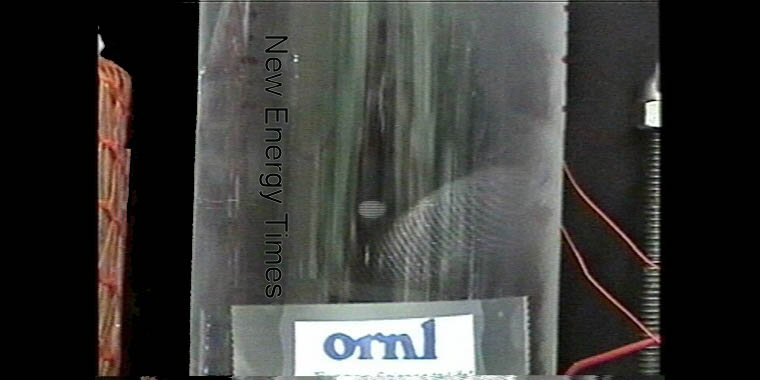|
INTRODUCTION
1. Introduction to Special Edition #33
By Steven B. Krivit

Photo: Daniel Bosler |
This special issue of New Energy Times represents the continuing investigation of scientific work of six researchers* on a team led by Rusi Taleyarkhan, a professor in the Purdue University School of Nuclear Engineering, and the politics surrounding their research.
The team is one of a few groups that, for several decades, has been investigating and attempting to achieve acoustic inertial confinement fusion. The team is the first to claim success. It calls its version of this research bubble fusion. |
The team members made their discovery while working at Oak Ridge National Laboratory in Tennessee. Even before their seminal paper published, their claims drew skepticism, and they were politically attacked. Prominent U.S. physicists even made efforts to stop the publication of the group's paper in Science.
The original paper was not perfect, and the team answered the legitimate criticisms and published an even stronger paper several years later after a meticulous review by top Oak Ridge management. The group now has 12 related scientific publications to its credit.
For several years after the discovery, Taleyarkhan continued the research, until he was targeted by competitors at University of California, Los Angeles, and University of Illinois who teamed with corrupt professors at the Purdue School of Nuclear Engineering, including the head of the school, and an eager and malicious journalist, Eugenie Samuel Reich, writing for Nature.
Together, Taleyarkhan's enemies were able to create enough turmoil to initiate a congressionally mandated investigation by Purdue. Feeling their backs against the wall, and perhaps not wanting further probing from Congress, Purdue administrators conducted an investigation which ended in their giving Taleyarkhan over to the federal government as a scapegoat.
Earlier this year, the Navy issued a debarment order that will temporarily prohibit Taleyarkhan from participating in any new federal procurement activities, such as receiving new contracts, through September 2011. Taleyarkhan attempted to seek justice with the Navy but to no avail.
The inspector general's office in the Department of Defense recently ordered an investigation into the actions of the Navy's Office of Naval Research inspector general's office and Navy's Acquisition Integrity Office.
In this special issue of New Energy Times, we present several related articles pertinent to the recent developments:
"Purdue Bubble Fusion Pioneer Punished, Again" provides a general overview of the debarment matter and introduces the key players from the Navy.
"The Truth Is the Only Weapon I Have" contains a few personal reflections from Taleyarkhan given to New Energy Times Nov. 19, 2009, and provides a glimpse of the effort that at least one prominent Purdue professor made to set things right.
"Analysis of Navy Debarment of Taleyarkhan" closely inspects the debarment letter as well as the process followed by the Navy's Acquisition Integrity Office in its handling of the Taleyarkhan case. The article contains significant details that reveal gross incompetence on the part of the AIO. However, it also includes some interesting comments from Office of Naval Research Inspector General Holly Adams.
"Navy Debarment Order Outside of Navy Jurisdiction" shows that the Office of Naval Research took punitive action against Taleyarkhan beyond its authority and had no business ordering the debarment.
"UCLA-UIUC Bubble Fusion Attempt: A Guaranteed Failure" and its accompanying slide presentation show that the key complaint that triggered the Navy action against Taleyarkhan was a setup: a scientific replication attempt by his group's competitors that was guaranteed to fail. This article contains interesting comments from Office of Naval Research Inspector General Holly Adams, who understood that the UCLA-UIUC work was a setup but let Taleyarkhan take the fall.
"The Purdue Bubble Fusion Witch Hunt" looks into the behavior of researchers at Purdue University when two groups made their attempts to replicate the Taleyarkhan group's "bubble fusion" claims. The article also provides a glimpse into the corruption and academic political strife in the Purdue School of Nuclear Engineering.
"The Mystery of the Administrative Record" reviews the interesting matter of Adam's office apparently cherry-picking 10 of perhaps hundreds of case documents to give to the AIO, which it in turn used to debar Taleyarkhan.
"Taleyarkhan's Plea to Dismiss Proposed Debarment" is text that Taleyarkhan provided to AIO to attempt to set the record straight and plead for justice.
"Purdue Faculty Senate Chairman Attempts to Aid Taleyarkhan" is about how one administrator at Purdue University tried to assist Taleyarkhan and how he ran into resistance.
* JaeSeon Cho (formerly with Oak Ridge National Laboratory), Robert C. Block (Rensselaer Polytechnic Institute), Richard T. Lahey Jr. (Rensselaer Polytechnic Institute), Robert I. Nigmatulin (Russian Academy of Sciences) and Colin West (formerly with Oak Ridge National Laboratory)
NEWS AND ANALYSIS
2. Purdue Bubble Fusion Pioneer Punished, Again
By Steven B. Krivit
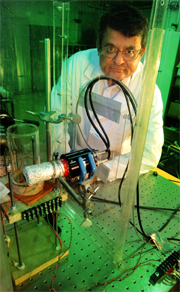
Rusi Taleyarkhan
|
Purdue University professor Rusi Taleyarkhan has been debarred by officials in the U.S. Navy. He is temporarily prohibited from participating in any new federal procurement activities, such as receiving new contracts, through September 2011.
New Energy Times learned earlier this week that the debarment letter had been leaked to the media.
The debarment resulted from Purdue’s investigation of federally funded research projects conducted at the school.
Taleyarkhan cried foul, but the Navy closed the case.
Taleyarkhan received the letter of proposed debarment on Feb. 13. It hit hard, as he wrote to New Energy Times.
"In addition to the sanctions already put on me by Purdue," Taleyarkhan wrote, "I am now to be disbarred from all federally sponsored grants because of the Purdue findings of research misconduct for charges made by Tsoukalas, Putterman and Suslick and for Putterman and Suslick's failure to replicate.
|
"I am only holding together with the convinced knowledge that not all of America is this way. To say I am devastated by our government's decision via ONR is an understatement."
However, an investigation by the Department of Defense inspector general is under way. New Energy Times spoke to a clerk in the DoD IG's office on July 8, 2009, who confirmed that a complaint had been accepted. The DoD clerk stated that the Navy inspector general has been directed by the DoD inspector general to conduct an investigation into the actions of ONR and AIO.
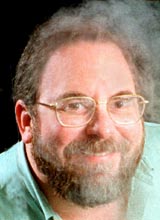
Kenneth Suslick
|
Some of the research projects in acoustic inertial confinement fusion, also known as "bubble fusion," had been funded through the Defense Advanced Research Projects Agency of the U.S. Department of Defense. Another part of the research had been funded by the U.S. Department of Energy.
A team from UCLA (physics professor Seth Putterman and graduate student Brian Naranjo) and the University of Illinois (chemistry professor Kenneth Suslick) attempted a DARPA-sponsored replication of the work and failed to replicate the results. They also failed to replicate the experimental configuration, processes, and analytical method and interpretation.
Rather than admit a failure to replicate the $800,000 experiment, they accused Taleyarkhan, the leader of the other group, of fraud, suggesting that the nuclear effect they were searching for was not real. |
The accusation didn't take into account the fact that the original groundbreaking work (which the teams at the two schools were supposed to be replicating) had been performed by a team of six researchers, some of them pioneers in the nuclear industry. The accusation also didn't take into account the fact that the seminal experiment was performed while Taleyarkhan was still at Oak Ridge National Laboratory. Nor did the accusation take into account numerous other factors such as a videotaped live demonstration of the experiment performed at Oak Ridge and an intense internal review by top Oak Ridge management.
Nevertheless, the accusations of fraud seemed to be easy to pitch to a public that had heard too much of science fraud in recent years.
The fraud accusations were well-timed with other disparaging accusations against Taleyarkhan from Lefteri Tsoukalas, the head of the Purdue University School of Nuclear Engineering, and Tatjana Jevremovic, another professor in the school and Tsoukalas' girlfriend.
The pair provided destructive innuendo to Nature reporter Eugenie Samuel Reich, and thanks to her series of four incendiary articles on March 8, 2006, the news spread worldwide within hours.
Possible vindictive motives from Tsoukalas and Jevremovic are reviewed in The Purdue Bubble Fusion Witch Hunt. Taleyarkhan has since sued both. Jevremovic settled out of court on March 14, 2009.
The accusations reached the Office of Naval Research, which was responsible for the DARPA funding several years ago, and it fell on ONR's back to insure that Purdue was handling its government contracts properly. ONR asked Purdue to investigate the allegations. Significant pressure was also brought to bear by Rep. Brad Miller, D-N.C., chairman of the House Committee on Science and Technology’s Subcommittee on Investigations and Oversight, to show the government that Purdue was serious about enforcing research integrity. Eventually, Purdue charged Taleyarkhan with two instances of "research misconduct," not fraud.
Those two instances had no direct relevance to the actual science. Throughout multiple and lengthy processes, all allegations of fraud and fabrication were dismissed, and the Purdue investigation committee was left with (in fact, created) two allegations of dubious merit.
Through circumstances explained in Analysis of Navy Debarment of Taleyarkhan, ONR decided - after the fact - that Purdue had not punished Taleyarkhan enough and recommended his temporary debarment.
This appears to be in violation of the Code of Federal Regulations governing debarment (CFR 180.125), which dictates that agencies must not debar to institute punishment.
Holly Adams, the inspector general for ONR, took a cursory look at Purdue's investigation, spoke to Taleyarkhan's accusers (but not Taleyarkhan or his witnesses) and decided that Purdue had done a proper and thorough job.
Adams forwarded the recommendation for debarment to the Navy attorneys at the Acquisition Integrity Office in February. They looked at the documents and the recommendation that Adams gave them and notified Taleyarkhan of the proposed debarment.
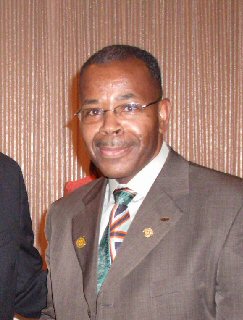
Joseph K. Moore
|
Taleyarkhan received the letter of proposed debarment on Feb. 13. It hit hard, as he wrote to New Energy Times the next day.
"It is gut-wrenching," he wrote, "to read in the letter from [Joseph K. Moore, associate counsel in the Office of the General Counsel at AIO] of the 'willingness of Dr. Taleyarkhan to engage in fraudulent, unethical and dishonest business practices.' It is now also clear to me that it was Tsoukalas who started this ONR investigation in 2007 by using their hot line. I suspect he is also the person who instigated Reich again about the NSF award. His vindictiveness is beyond compare.
"I'm still somewhat incredulous and shaken at the mischaracterization and vindictiveness involved, but I have closed a part of myself to this viciousness with the help of my loving and supportive family."
Purdue did not determine that Taleyarkhan had participated in any fraud. Instead, such language was introduced by AIO in its debarment letter without any notation about the source of such language.
And AIO permitted the letter to be leaked.
Taleyarkhan was given a chance to respond to the proposed debarment, and he provided written as well as oral testimony to Navy officials on March 18.
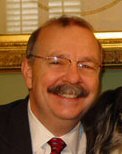
Mark O. Wilkoff
|
AIO wrote that the debarment is "necessary to protect the Government's interests."
Despite Taleyarkhan’s best efforts to convince AIO that he had been framed, Mark O. Wilkoff, the Navy suspending and debarring official at AIO, declined to honor his request to dismiss the debarment because, as he stated in the cover letter, Taleyarkhan's information didn't match the Purdue investigation.
"We find your other assertions to be unfounded and inconsistent with the results of a thorough independent investigation by Purdue University and U.S. Government," Wilkoff wrote.
In fact, the last part of the statement is not true: The U.S. government (at the time of the AIO letter) did not investigate the Purdue matter. Neither ONR, as stated by Adams to this reporter, or AIO, as is clear from its letters, investigated the matter.
3. "The Truth Is the Only Weapon I Have"
By Steven B. Krivit
"I feel that my rights as a citizen have been violated yet one more time," Purdue University professor Rusi Taleyarkhan said Thursday about the U.S. Navy debarment order against him being leaked to the press.
"This time, it’s by my own federal government,” Taleyarkhan said. “They were supposed to have kept this matter confidential, especially the debarment letter and the proposed reason behind the action."
The debarment temporarily prohibits him from participating in any new federal procurement activities, such as receiving new contracts, through September 2011.
Taleyarkhan learned earlier this week about the leak.
The debarment letter was written by Joseph K. Moore, associate counsel in the Office of the General Counsel of the Acquisition Integrity Office, as recommended by Office of Naval Research Inspector General Holly Adams and the ONR Science Technology Integrity Board.
"I believe, in a way, that it may be for the best because the underlying basis for the letter, which Moore was made to prepare, was based upon falsified information," Taleyarkhan said. "It will all now come out, and the public can judge for themselves what the true reason for this debarment is and the very fundamental illegitimacy for this action on the part of Adams and the ONR STIB.”
Taleyarkhan discussed the reaction he expects once the news travels further.
"I'm concerned about the way that some of the media may report it," Taleyarkhan said. "I believe that if Eugenie Reich [Nature] portrays it to the world the way I expect her to do it - based on the backstabbing way in which she has conducted herself in collusion with our well-known detractors - the immediate fallout will be quite negative for me."
He said, "It will affect my health, of course. Nobody likes to read stories like this about themselves. It will hurt me from a mental perspective and a health perspective, but I have to get over it, as I will, I'm sure.
"I also expect that it will further inflame the rhetoric involved in terms of my ability to serve my country and the world as best I know how."
Taleyarkhan explained how he was dealing with both the debarment and the stress of the impending release of the news.
"The only way I know how to deal with stress is to keep myself focused on what I believe to be the truth and be satisfied with the fact that my entire team of co-authors stands behind me and also the university system," Taleyarkhan said.
"I have to cope with this particular stress,” he said, “knowing that I am doing the right thing by not caving in to pressures from our detractors and competitors through their manipulation of our government and the media. The truth is the only weapon I have, and I think it is what sustains me in life."
Taleyarkhan has received overwhelming support from DARPA program managers, colleagues, some of the former staff in the School of Nuclear Engineering and numerous students.
Another reason Taleyarkhan is concerned about the debarment is that it affects other people professionally, as well.
"The debarment affects many students," Taleyarkhan said, "as well as my collaborative faculty at Purdue. Purdue is also suffering, because it has lost federal funding as a result of actions of my errant colleagues.”
New Energy Times has obtained 27 testimonials, including some notarized letters, in support of Taleyarkhan and his character, professionalism and courage.
4. Analysis of Navy Debarment of Taleyarkhan
By Steven B. Krivit
On Feb. 13, 2009, Purdue University professor Rusi Taleyarkhan received a proposed debarment letter from the Navy's Acquisition Integrity Office. Taleyarkhan then provided corrections and his response to the proposal.
Still, the final debarment letter of May 4, 2009, contained numerous falsehoods, misrepresentations and unsubstantiated statements. On close examination, the debarment letter fails appreciably to substantiate Moore's recommendation to debar Taleyarkhan.
In an attempt to get to the heart of the matter, New Energy Times asks seven key questions:
QUESTION 1:
What wrong did professor Rusi Taleyarkhan commit?
Close examination of the letter by Joseph K. Moore, associate counsel in the Office of the General Counsel of the Acquisition Integrity Office, reveals that Moore fails to provide a simple, clear, direct answer. Moore simply reiterated the Purdue findings rather than analyzing the case.
Had Moore performed his own investigation, or had the Office of Naval Research Science Technology Integrity Board performed its own investigation, AIO and ONR would have seen through Purdue's efforts.
AIO could have, under the Code of Federal Regulations 180.845c, referred "disputed material facts to another official for findings of fact." Had another official compared the material facts as provided by Purdue to those provided by Taleyarkhan, the official would have seen that the Purdue findings were "arbitrary, capricious and clearly erroneous," as stated in the code. Therefore, the Purdue findings would have been subject to rejection by AIO.
New Energy Times performed such a comparison and published it on Jan. 12, 2009.
With regard to Purdue's allegation A.2 (itself fabricated outside of Purdue's due process), Taleyarkhan encouraged (not compelled) Adam Butt to participate in the work that was required (cross-checking data) for the paper that reported the experiments of the lead author Yiban Xu. Butt contributed crucial work to the paper.
With regard to Purdue's allegation B.2 (also fabricated outside of Purdue's due process), Taleyarkhan was one of a six-member group that shared and expressed the opinion that their scientific work had been independently confirmed.
Neither of these allegations is in any way science research misconduct or, as Moore stated in his Feb. 3 letter to Taleyarkhan, "fraudulent, unethical or dishonest" behavior.
Furthermore, there was an entirely legitimate reason for Xu to ask Butt to perform the cross-checks, then for Taleyarkhan to ask and encourage Butt to do the work, and consequently, for Xu to add Butt's name as a co-author of the paper.
Purdue’s suppositions - blindly reasserted by Moore - are that there was some kind of ruse to add an author's name superfluously, that Taleyarkhan had something to gain by forcing the inappropriate addition of an author's name and that Taleyarkhan did so with intent to deceive. These suppositions are unsubstantiated.
ONR Inspector General Holly Adams began to see the problem clearly and told this reporter on Feb. 13, 2009, that Taleyarkhan would have had everything to lose by forcing the inappropriate addition of an author's name.
"I just don't understand someone taking the risk," Adams said. "Thirty-something years - why would somebody wipe that out?"
The Code of Federal Regulations defines preponderance of evidence as "proof by information that, compared with information opposing it, leads to the conclusion that the fact at issue is probably more true than not."
Careful scrutiny of every one of Purdue's pieces of evidence, and comparison to the direct evidence in support of Taleyarkhan, reveals that the list of evidentiary material in support of Taleyarkhan, despite being shorter, is more direct, more defensible and less circumstantial than the list of evidence presented against Taleyarkhan by Purdue.
AIO most likely assumed that the Office of Naval Research Science Technology Integrity Board and the Office of Naval Research inspector general did their jobs and properly scrutinized Purdue's allegations and that there was no need for AIO to request an independent investigation. Moore's job, and that of his colleagues at AIO, by all appearances was merely to follow the board’s orders/initiative, to take what it gave him, to deliver the verdict and to impose a sentence.
QUESTION 2:
Federal debarment requires the demonstration of a "cause of so serious or compelling a nature that it affects the person's present responsibility."
What is the evidence that Taleyarkhan's present responsibility is compromised?
Moore can't answer this question because he does not have a valid answer to question #1. Furthermore, Moore presented no evidence that indicates that Taleyarkhan's present responsibility is compromised.
QUESTION 3:
Federal debarment requires evidence to demonstrate that the respondent "failed to perform in accordance with the terms of one or more public agreements."
How did Taleyarkhan fail to perform in accordance with the terms of one or more public agreements?
Moore can't answer this question because he does not have a valid answer to question #1. Moore also has not explicitly stated the terms of which "public agreement" Taleyarkhan failed to perform in accordance with.
Office of Naval Research Inspector General Holly Adams wrote on July 17, 2008, that the Purdue investigation "was prompt, thorough and objective." But how would she know? She did not perform her own investigation.
The most egregious example of Adams' failure is her site visit to Purdue. She interviewed Taleyarkhan's accusers, but she failed to interview the respondent (Taleyarkhan) or any witnesses for the respondent. The ONR STIB did not perform its own investigation. Neither did AIO.
Taleyarkhan provided Moore with corrections to Moore's Feb. 3, 2009, letter.
As a result, Moore's May 4 "Memorandum for the Department of the Navy Suspending and Debarring Official" contained some - but not full - corrections to the record.
Moore's paragraphs 16-23 in the May 4 letter contain numerous inaccuracies. The following list addresses some of the more serious flaws.
Page 4, paragraph 17
Moore states that a debarred individual need not have a connection with a particular federal contract or grant. This directly contradicts what Holly Adams explained to this reporter on Feb. 17 in her office in a recorded meeting.
Page 4, paragraph 17
Taleyarkhan informed Moore on March 18 that a more authoritative scientific body - the American Physical Society - reviewed the Purdue allegations and dismissed them as mere "hubbub."
Moore countered this by stating that "the results of Purdue's investigative
findings were again analyzed by ONR IG and found to be reasonable." Moore's response is vague and illogical. He failed to provide a specific, valid counterargument.
Further, if Moore's statement is true - that the ONR inspector general took the American Physical Society matter under review - then there should be some evidentiary trail that proves this.
Pages 4-5, paragraph 17
In contrast to Moore's inference that the Xu statement is unsigned, a signed, notarized, statement by Xu does exist.
Adams alerted this reporter to the crucial importance of Xu's statements. In a Feb. 13, 2009, telephone conversation, she said, "I did suggest that Dr. Taleyarkhan was not the lone soldier in this thing. If he had wrongly gotten a couple of people to ... state that they witnessed something they had not witnessed, then those two people are in trouble, too, because they lied."
During the Feb. 13 phone call, Adams speculated that, if Xu and Butt had corroborated the Taleyarkhan group work, they must have lied, also.
"Butt, Xu, they're not clean." Adams said. "If they didn't see [positive results] and said they did, they lied. It’s a concern. It takes more than just one, so if Taleyarkhan did something wrong, then they did, too."
Adams' comments during the phone call also suggest that the true concern for ONR is not, as officially stated, the two instances of alleged research misconduct but instead a more fundamental question of whether the whole Xu/Butt replication was a fraud. Furthermore, Adams’ comments reveal her prejudice in this matter.
Adams continued, "If they [Purdue] say they [Xu/Butt] didn't do anything wrong, then we're back to the beginning. Then Taleyarkhan didn't do anything wrong. You've got some people who are complicit in these activities, and they overlooked it."
Adams revealed the fatal flaw in Purdue's (and therefore AIO's) argument that Taleyarkhan did something wrong. She was correct that other people were complicit, but she did not go to Purdue and personally interview witnesses for Taleyarkhan, as this reporter did. New Energy Times will report a portion of the results of this on-site investigation in The Purdue Bubble Fusion Witch Hunt.
Page 5, paragraph 20
Moore attempts to refute the facts presented in Xu's signed affidavit and discredit Xu's expertise by citing language from Purdue's report. The text Moore cites from Purdue is incorrect, as Taleyarkhan explained on page 25 of his rebuttal to the Purdue investigation committee.
In this paragraph, Moore also repeats or paraphrases numerous statements from the Purdue report without saying that he has done so.
During the Feb. 13 telephone conversation, Adams revealed to this reporter that politics seems to be playing a part behind the scenes.
"Poor Purdue, they're not done with me yet," Adams said. "I gave them a heads-up. I'm not going to let them know that they're home free. This is still not necessarily quite done, and I might get pressure from the congressman to pursue that, as well. I discussed that with the counsel the other day, and they're definitely worried that that's something that might need to be addressed."
This means that ONR counsel were aware of the significant potential hole in the allegations against Taleyarkhan. Adams and ONR counsel knew there was a hole. Adams thought the hole was the witnesses for Taleyarkhan, Xu and Butt, but Adams didn't have enough information to know that those holes were the other people in the Purdue School of Nuclear Engineering who were trying to take Taleyarkhan down.
Page 5, paragraph 21
Moore states that, "on the morning of January 26, 2005, Dr. Taleyarkhan asked Mr. Butt, his master's student, to become an author on Xu's NED paper." This is false on three accounts.
First, nobody asked Butt to "become an author." This supposition is illogical and meaningless, let alone contradictory to the facts: Butt was asked to perform work for the paper. He performed the work. Xu consequently added Butt's name.
Second, Taleyarkhan's actions in this matter were entirely legitimate. Third, Butt's contributed work for the paper was entirely legitimate. (See the explicit set of facts on this matter in the section "Timeline of Events Related to Authorship of Xu/Butt Paper" in the New Energy Times document "Purdue Knew.")
In this paragraph, Moore also repeats or paraphrases numerous statements from the Purdue report without saying that he has done so.
The following facts from Xu's signed, notarized letter are important:
Page 2, paragraph 8
“I made the decision to include Butt as co-author of the NED and NURETH-11 papers."
Page 2, paragraph 9
"Butt was grateful for the opportunity, happy and willing to accept. He conducted checks of data, validated and confirmed appropriate transfer and use for post-processing, data analyses and conclusions. Butt transmitted his findings to me and to Taleyarkhan via email."
Page 2, paragraph 10
"Butt also performed a review of the draft manuscript for NED and offered his corrections and suggestions."
Page 2, paragraph 11
"Butt willingly and enthusiastically signed the NED journal joint transmittal letter accepting co-authorship and never showed signs of discontent to me."
Page 2, paragraph 11
"Butt willingly posed for pictures with me for a July 12, 2005 Purdue University Press Release. He participated in discussions with E. Venere and provided comments for the Press Release."
Page 2, paragraph 13
"I added Butt during early 2005 to be co-author of the NURETH-11 conference paper because of the overlap of the NED and NURETH-11 papers. Butt was excited to be the person chosen to possibly go to present ..."
Page 2, paragraph 13
"Per my recollection, Butt participated in data acquisition for sonoluminescent signals from various shaped bubble clusters which were included in the NURETH-11 paper. Butt's name was on the paper since January 2005, and the conference was held during October 2005. Neither I nor, to my knowledge, Revankar nor Taleyarkhan pressured Butt in any way, shape or form. In fact, he was thrilled and gratified that he was part of the team."
|
For the record, the last paragraph in Xu's signed, notarized letter states, "This letter, and prior letters by me, are and were completely voluntary by me, without undue influence by any outside individuals, and they represent fair, complete, and accurate statements of fact."
Page 5, paragraph 23
This paragraph refers to Taleyarkhan's allegation that Purdue fabricated the two instances of research misconduct. Moore states that "Purdue conducted an initial investigation which was reviewed by the second independent board."
Yes, there were two independent investigation committees. Yes, the second one reviewed the work of the first one. These are interesting points, worthy of further examination.
Moore wrote, "There is simply no evidence in the administrative record to corroborate" Taleyarkhan's allegation that Purdue's allegations were fabricated. This is misleading and false. Taleyarkhan has provided such evidence in his very detailed 81-page Exhibit 1, attached to his rebuttal to Purdue. Adams had a copy. Taleyarkhan also gave a copy to Moore.
As far as Purdue's allegation A.2, it did not exist in the first committee; the second committee created it. Allegation B.2 had been dismissed by the first committee; the second committee brought it back. Both of these actions occurred in direct contradiction to Purdue's written policies and procedures.
When Taleyarkhan cried foul about the fabrication of the two new allegations in his appeal, the Purdue Appeal Committee did not even dispute that the Investigation Committee introduced the two new allegations. Instead, the Appeal Committee said that the Investigation Committee was justified in introducing A.2 and B.2. Furthermore, the Appeal Committee attempted to redefine the meaning of the word "new."
Thus, Purdue deceived Moore and the public. New Energy Times has explained how Purdue carried out the fabrication in a short, easy-to-follow video documentary.
QUESTION 4:
Which influential factors cited in the Code of Federal Regulations support the debarring official's decision in the Taleyarkhan matter?
Moore can't answer this question because he does not have a valid answer to question #1. Also, the following factors, paraphrased from the Code of Federal Regulations, do not support debarment.
Factors:
| a) |
The actual or potential harm or impact that results or may result from the wrongdoing. |
| b) |
The frequency of incidents and/or duration of the wrongdoing. |
| c) |
Whether there is a pattern or prior history of wrongdoing. |
| d) |
Whether there has been any prior exclusion or disqualification by any federal agency. |
| e) |
Whether there is any prior administrative agreement based on similar conduct. |
| f) |
Whether and to what extent Taleyarkhan planned, initiated or carried out the wrongdoing. |
| g) |
Whether Taleyarkhan accepted responsibility for the wrongdoing. |
| h) |
Whether Taleyarkhan has paid or agreed to pay all criminal, civil and administrative liabilities as a result of the wrongdoing. |
The remaining factors listed in the Code, (j-r), do not apply to Taleyarkhan's case: They apply, instead, to an official who has oversight responsibility for a wrongdoing.
Disposition of Factors:
None of the factors listed above supports the cause for debarment because there was no wrongdoing. Even if there was wrongdoing, the following factors do not support cause for debarment:
Factor b): because there were no prior incidents
Factor c): because there was no prior history
Factor d): because there were no prior exclusions
Factor e): because there were no prior agreements
Factor a) does not support debarment because no actual or potential harm resulting from Taleyarkhan's actions has been identified by the government:
Factors f) to h) do not support debarment because no wrongdoing has been identified by the government.
It might help the reader to remember exactly what Taleyarkhan did:
1. Taleyarkhan encouraged Butt to work on the paper with Xu.
2. Taleyarkhan mutually agreed with his five co-authors to use the word "independent" on another paper.
There is nothing improper, unethical or illegal about these actions.
Rather than perpetrating a wrongdoing, Taleyarkhan has been the victim of one. He has had to pay significant costs to defend himself, in addition to the collateral damage that he and his family have suffered and continue to suffer.
QUESTION 5:
Was Moore's debarment recommendation, in violation of 180.125.c of the Code of Federal Regulations, issued as punishment?
The code states, "A Federal agency may not exclude a person or commodity for the purposes of punishment."
Adams expressly accepted the Purdue findings on July 17, 2008, and she was fully aware of the subsequent Aug. 27, 2008, Purdue sanctions. According to New Energy Times' investigation, neither ONR nor Adams communicated to Purdue any dissatisfaction with its sanctions in August or in the following five months.
According to Adams' statements to this reporter on Feb. 13, 2009, the awarding of a National Science Foundation grant to Taleyarkhan (after the Purdue investigation and sanction was complete) triggered the Science Technology Integrity Board’s revisiting the Taleyarkhan matter. According to Adams, the board decided then and there that the Purdue sanctions were insufficient.
ONR's recommendation to debar Taleyarkhan was wrong not only for many other reasons but also because the recommendation was punishment and a reprisal for Taleyarkhan's winning of a research award from another agency, the National Science Foundation.
"During the same period of time," Adams said, "despite the sanctions, Taleyarkhan accepted another award.
"I got hold of NSF, but it was too late. ... They had already awarded. ... So I was wandering around the 14th floor [of ONR], and three of the STIB members said we want another meeting.
"The appearance is that this guy conducted research misconduct, gets his hand slapped but still [gets another government grant], ... so we had another meeting and voted unanimously for AIO to consider a debarment."
According to Moore, the board met on Dec. 7, 2008, three months after Purdue closed its investigation.
QUESTION 6:
Did AIO fail to prove a cause for debarment, and, if so, how did this happen?
Part 180.855(a) of the Code of Federal Regulations states that the "Federal agency has the burden of proof to prove that a cause for debarment exists."
The reasonable assumption is that the agency (AIO) obtained and demonstrated proof before it established a cause to debar Taleyarkhan.
Yet here is the fundamental, inherent vulnerability of this mandate: There is nobody to whom AIO must demonstrate such proof, no judge, no jury, no check and balance - unless a post-facto investigation is initiated.
The problem gets worse: Part 180.855(b) states that, should the respondent seek reconsideration, "once a cause for debarment is established, [the respondent has] the burden of demonstrating to the satisfaction of the debarring official that [the respondent is] presently responsible and that debarment is not necessary."
Therefore, the system places an undue burden on the respondent. Although the debarring official must convince no one before he or she initiates debarment, the respondent must convince the same debarring official to reverse the debarment after that official makes the determination. The debarring official and his/her staff collectively serve not only as judge, jury and executioner but also as plaintiff.
Part 180.880 lists five factors that the debarring official may consider should the respondent request reconsideration. None of these factors explicitly addresses a failure of due process in the event that a debarring official has failed to demonstrate adequate proof.
QUESTION 7:
Did ONR, and consequently AIO, fail to consider "corrective actions or sanctions already imposed by the institution"?
Yes, the government itself has provided the proof.
The Office of Naval Research Process for Handling Scientific Misconduct Allegations states that "possible final actions, excepting criminal sanctions, should consider any corrective actions or sanctions already imposed by the institution."
According to Moore, the STIB met on Dec. 7, 2008, three months after Purdue closed its investigation. The STIB decided that "Purdue's sanctions had no affect on Dr. Taleyarkhan's professorship and was perceived as having no consequence for his misconduct."
This is incorrect. The following information has been known publicly for many months, and Taleyarkhan reiterated it to Moore on March 18 in Moore's office:
1. Taleyarkhan's named chair professorship has been removed. This is the ultimate rank in academia, and its loss brings great shame.
2. The loss of Taleyarkhan's chair results in a 40 percent cut in his income.
3. Taleyarkhan has been shamed in front of his colleagues, the worldwide scientific community, his students, and even his daughters, who are also students at Purdue.
4. Taleyarkhan has faced deep anguish as a consequence of the continued impact on his personal and family life.
Taleyarkhan has had to face other consequences, most of which have been known publicly:
1. Purdue disseminated a worldwide press release that portrayed Taleyarkhan as an unethical scientist.
2. This perception has entered the semi-permanent historical record, as evidenced by a news story in Physics Today, a recent book by Charles Seife and an article in Popular Science.
3. Taleyarkhan has endured innumerable other physical, emotional and financial hardships.
Other media, following the story without investigating, wrote stories which may have caused irreparable damage to Taleyarkhan's reputation.
5. Navy Debarment Order Outside of Navy Jurisdiction
By Steven B. Krivit
Hard as it may be to believe, the debarment of Purdue University professor Rusi Taleyarkhan from new federal funding for the next 28 months, recommended by the Office of Naval Research and executed by the Navy Acquisition Integrity Office, was out of the offices’ jurisdiction.
The Office of Naval Research did have cause to direct Purdue to conduct an investigation, but that's where it should have ended.
Joseph K. Moore, associate counsel in the Office of the General Counsel of the Acquisition Integrity Office, wrote in letters on Feb. 3 and May 4 to Taleyarkhan that the background for the proposed debarment originated from ONR grant N00014-05-1-0459, which was to fund a replication project at the University of California, Los Angeles, in collaboration with the University of Illinois, Urbana, and Purdue University.
The Navy letters say that the work discussed in the Purdue allegations was performed with the ONR funds that were to be applied to the joint UCLA/UIUC/Purdue replication project and were, therefore, within ONR's jurisdiction.
The debarment letter states, "On 18 April 2008, following Purdue's full investigation, the University reported two substantiated instances of scientific research misconduct by Dr. Taleyarkhan, who conducted experiments at the expense of the ONR grant N00014-05-1-0459."
But neither of the two allegedly substantiated allegations by Purdue pertains to the replication project.
Purdue's allegation A.2 pertains to the alleged improper addition of an author's name to the confirmatory research of Purdue researchers Yiban Xu and Adam Butt, published in Nuclear Engineering and Design. This has nothing to do with the ONR/DARPA-funded replication attempt.
Purdue's allegation B.2 specifically refers to the research published in the Taleyarkhan group’s 2006 Physical Review Letters paper. That, too, has nothing to do with the ONR/DARPA-funded replication attempt.
This is easily confirmed. The ONR grant awarded to UCLA/UIUC/Purdue was for research on an external neutron source experiment. The research in the Taleyarkhan group’s PRL paper is about self-nucleated experiments, not external neutron source experiments.
Worse still for ONR, the research in the PRL paper was funded not by ONR/DARPA but by the Department of Energy. Reporter Eugenie Samuel Reich, working for Nature, had published some innuendo about the lack of acknowledged funding, because the source of funding is not acknowledged in the paper.
The reason for that is also simple. An aspect of Taleyarkhan's bubble fusion work relates to national security issues. And an e-mail from Larry D. Wilcher, DoE director of the Office of Security Technology and Assistance, to Taleyarkhan, and another e-mail, from Carl Pocratsky at DoE headquarters, not only confirm that the DoE was the source of funds but also confirm that Taleyarkhan made the right decision to not acknowledge the source of funds.
As a cross check, on July 3, 2006, Taleyarkhan confirmed to DARPA program manager William Coblenz that none of the research in the PRL paper was funded by DARPA.
The research relevant to Purdue's allegation B.2 falls outside of ONR jurisdiction because it was not funded by ONR and it was not within the scope of work defined in the ONR grant.
The debarment order is outside of the Navy's jurisdiction and quite possibly illegal.
6. UCLA-UIUC Bubble Fusion Attempt: A Guaranteed Failure
By Steven B. Krivit
Joseph K. Moore, associate counsel in the Office of the General Counsel of the Acquisition Integrity Office, disbarred Purdue University professor Rusi Taleyarkhan in great part because an attempted replication, which the Navy funded, failed to produce positive results.
The project was an attempt to replicate the Taleyarkhan group's "bubble fusion" experiment that had been performed at Oak Ridge national laboratory. The attempt was made at University of California, Los Angeles.
In the letter in which Moore recommended that Taleyarkhan be disbarred, he wrote that UCLA conducted a "mirror" of the Oak Ridge experiment and that UCLA's failure to replicate the Oak Ridge results was a major cause for the Purdue investigation.
Aside from the counterproductive implication for a scientific process that relies heavily on trial and error, Moore's supposition is interesting for two reasons.
First, neither of the allegedly substantiated Purdue allegations had anything to do with the ONR grant to perform the replication attempt.
The second interesting point is that the UCLA/UIUC replication attempt was not a mirror of the Oak Ridge experiment. This slide presentation best explains this matter.
As well, two videos, one from the Taleyarkhan group at Oak Ridge and another from the Seth Putterman group at UCLA, show visually and aurally what the results are supposed to look like (Oak Ridge) and what failure (UCLA) looks like if you don't build and operate the experiment correctly.
Oak Ridge National Laboratory Experiment
UCLA/UIUC Experiment
The video from the Taleyarkhan group was filmed at the Oak Ridge National Laboratory, Y-12 Nuclear Weapons Plant, Bldg. 9204-1, Rm. 113, Oak Ridge, Tenn., in 2001. It shows a Pu-Be isotope neutron-source nucleated bubble fusion
experiment with acetone.
In March 2009, Taleyarkhan provided New Energy Times with a technical description of the two video clips:
"The video shows what the bubble fusion process requires in terms of shape and rate of bubble cluster formation, implosion to disappearance and transient behavior of bubble clusters. Note that shapes must be spherical, and the rate is about 25 to 35 clusters per second.
"This clip was shown at the Nashville International Conference of the Acoustics Society of America, April 28, 2003, which was organized by Larry Crum and attended by [Seth] Putterman and [Kenneth] Suslick. They knew even back then what was required.
"The video clip is mesmerizing if one contemplates the fact that a mere neutron (of mass ~1^-27 kg as close to zero mass as one may get) produces such a huge macro-mechanical effect that can be seen and heard, and furthermore, reminds one of why and how thermonuclear bombs work as they do."
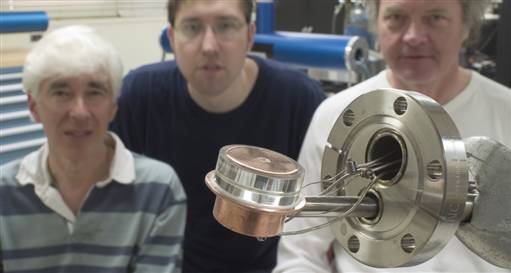
Seth Putterman, Brian Naranjo, James Gimzewski (BBC Image)
The Putterman group‘s video was filmed at UCLA in late 2005 and provided to Taleyarkhan by UCLA. The video shows the UCLA test cell operational performance for neutron-nucleated bubble formation aimed at replicating the Oak Ridge 2002 experiment system and performance.
About the UCLA video, Taleyarkhan wrote, "The clip shows how the system put together by Putterman/Suslick groups functioned. No spherical bubbles. Bubbles are cometlike, dissipative and small. Bubble clusters last for 5 seconds or more. The rate of bubble cluster formation is about 1 in 10 seconds versus about 20-30 every second in the Oak Ridge experiment, as required. Putterman and Suslick were told of this requirement at the start of contract itself."
The UCLA team not only failed to replicate the positive results that the Oak Ridge team observed but also failed to replicate the experimental configuration, processes, and analytical method and interpretation. In other words, the replication attempt was guaranteed to fail.
Yet, in their report to Bill Coblenz and Peter Schmidt, program managers at DARPA and ONR, respectively, Putterman and Suslick stated that they had built "an exact duplicate of Taleyarkhan’s reactor."
This reporter explained these issues to Holly Adams, the ONR inspector general, on Feb. 17, 2009. She seemed to understand the implication.
"And so," Adams said, "the point you're making is that the first paragraph of the [proposed debarment] letter received by Dr. Taleyarkhan on Friday was reflective of [the fact] that we hang our hat on the replication - the UCLA replication - or inability to replicate the experiment."
Adams further - and precisely - understood the significance of the UCLA/UIUC assertions.
"Again, correct me if I'm wrong,” she said, “there was, allegedly, misinformation passed from UCLA concerning their test of Dr. Taleyarkhan's procedure, or they misrepresented the experiment by not following his procedure to a "T," and thereby, they were unable to replicate his experiment, and as a result, the perception is, the public perception is, Purdue’s perception is, perhaps the ONR perception is that then Taleyarkhan's experiment didn't work as a result of not precise replication conducted by UCLA."
After this reporter explained to Adams the internal strife at Purdue and how Tsoukalas and his colleagues changed a positive tritium result into a negative result (see The Purdue Bubble Fusion Witch Hunt), she quickly grasped not only how Taleyarkhan became the target of a perfect storm but also that his academic colleagues were more likely to have committed science research misconduct than Taleyarkhan was.
"The rest [of the matters] were like - the other things fell like dominos,” Adams said. “I believe that what you have just said makes the definition under the federal guidance of scientific research misconduct, and if federal funding was involved at the time, that allegation can be made to the federal funding agency, and it will be investigated."
But by that time, Feb. 17, 2009, Adams, in collaboration with the apparently secret members of the ONR Science Technology Integrity Board, had made its recommendation to AIO to disbar Taleyarkhan. If Adams made an effort to convince the board to withdraw the recommendation, she was unsuccessful.
7. The Purdue Bubble Fusion Witch Hunt
By Steven Krivit
Joseph K. Moore, associate counsel in the Office of the General Counsel of the Acquisition Integrity Office, crafted the proposed and final disbarment letters which made Taleyarkhan ineligible for any federally funded research for 28 months.
The consequence of the Navy's actions will be severe for Taleyarkhan's career and reputation.
Moore, on behalf of AIO, did no investigation of his own and had trouble even sorting out the facts that were given to him. (see Analysis of Navy Debarment of Taleyarkhan)
Office of Naval Research Inspector General Holly Adams, who chaired the Science Technology Integrity Board and recommended the disbarment to AIO, did not perform a substantive investigation, according to her statements to this reporter on Feb. 13, 2009, regarding the proposed debarment letter. At best, both Navy groups took Purdue's report at face value.
Steven B. Krivit: Did your investigation lead to this letter? It doesn't seem like there was any investigation. It seems like they just copied the Purdue report.
Holly Adams: I only had six items that I needed to assign to Purdue to investigate. We did not investigate. Our job is to answer the hot line, see what the allegations are ... In this case, there was an institution that had oversight over what was going on so we directed the institution to conduct an investigation.
[Purdue] decided if there was any substance or not. ... They found the two least-impacting administrative [issues]. Nonetheless, they are very important. ... They came up with their answers after a very lengthy process.
SK: I guess you didn't do your own investigation.
HA: I did just two minor administrative [tasks]. They weren't really science. One, [the Taleyarkhan group] neglected to mention federal funding in one of the publications. Two, [Purdue] failed to follow process, notify us of the allegations.
|
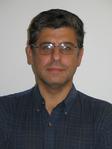 Martin Lopez- Martin Lopez-
De-Bertodano
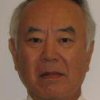 Mamoru Ishii Mamoru Ishii
|
One of the more interesting misunderstandings that is evident in Moore's debarment letters is his reference to a complaint letter from another Purdue professor in the School of Nuclear Engineering.
Moore writes, "On 13 January, 2006, Dr. de Bertodano, Professor at Purdue, wrote officials at the University, questioning Dr. Taleyarkhan's bubble fusion experiment and unusual results. As a result, Dr. Lefteri Tsoukalas, head of the Purdue School of Nuclear Engineering, formed a fact-finding committee to investigate Dr. de Bertodano's concerns."
This is false on two counts: 1) Martin Bertodano wrote to professor Mamoru Ishii, not officials at the university; 2) Bertodano was not questioning Taleyarkhan's experiment and results but his own (and Tsoukalas') group replication attempt of the Taleyarkhan group’s experiment.
Moore logically contradicts himself in the same paragraph, revealing a significant lack of understanding of the matter.
Moore's paragraph discussing Bertodano's letter continues with a list of concerns: "specifically, the data reported, the method of reporting, the actual authorship, and the conclusions reached in the Xu and Butt's independent confirmation of Dr. Taleyarkhan's sonofusion experiment."
|
To review, Moore begins the paragraph by suggesting that Taleyarkhan's colleagues had questions about Taleyarkhan's work, but the latter part of the paragraph shows that the questions at hand were about the Xu/Butt replication.
At that time, there were no specific questions about the Taleyarkhan group’s research or its "unusual results" in the Bertodano letter, as Moore wrote.
Worse still, the Bertodano letter had absolutely nothing to do with the Xu/Butt work. The letter was about the Tsoukalas group’s replication attempt.
Regardless of Moore's failure to understand and carefully read the Bertodano letter, Tsoukalas did not investigate Bertodano's concerns. Tsoukalas went after Taleyarkhan's replicators: Xu and Butt.
|
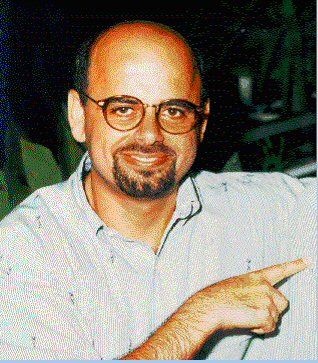
Lefteri Tsoukalas |
Tsoukalas' Fact-Finding Committee did not call Taleyarkhan to testify before the tribunal of Chan Choi, Franklyn Clikeman and Karl Ott, professors in the School of Nuclear Engineering. Instead, the committee called Xu, Butt and Ravenkar, the three authors of the paper delivered at the 11th International Topical Meeting on Nuclear Reactor Thermal-Hydraulics in 2005.
Purdue School of Nuclear Engineering Fact-Finding Committee |
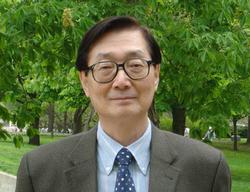
Chan Choi |

Franklyn Clikeman |
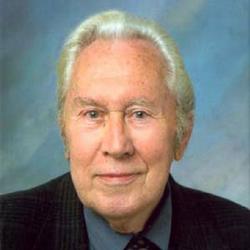
Karl Ott |
At the time, the Tsoukalas Fact-Finding Committee had no specific complaint or concern about Taleyarkhan's own published work. According to the Bertodano letter, the committee felt uncomfortable and nervous about Taleyarkhan's "bubble fusion" claim. Had the committee members had any direct concerns about Taleyarkhan or his group's work, they would have and should have gone after him and the group's work directly. They did not.
Bertadano addressed his Jan. 13, 2006, letter to Mamoru Ishii, also a professor in the School of Nuclear Engineering, apparently with the expectation that Ishii had the political power to effect change in the school.
"I am sending this letter to you," Bertadano wrote, "because I don't think that Dr. Tsoukalas is taking sufficient action to address the matter about the bubble fusion experiment. ... You are the only member of the faculty that has the authority and the commitment to do something."
On Feb. 7, 2006, Tsoukalas initiated two independent strategies to deal with the two separate confirmatory experiments at the school.
Few members of the public are aware that there were, in fact, two semi-independent replications of the Taleyarkhan group’s experiment. The well-known replication is that of Xu/Butt. The other one is from Tsoukalas' own group, of which Bertadano was a member. More on that in a bit.
First, Tsoukalas initiated an investigation of the Xu/Butt/Revankar group, which had, in the previous year, published its positive results in the proceedings of the NURETH-11 conference and in the journal Nuclear Engineering and Design.
The fears that Bertodano directly expressed in his letter were that his group and the Tsoukalas group’s replication efforts might become a public relations problem for the group in light of the "likely case that Drs. [Seth] Putterman (UCLA) and [Kenneth] Suslick (Illinois) publish a negative result."
Bertodano expected a negative result from the Putterman and Suslick group and was afraid that their result would be given more weight in the court of public opinion, thereby raising uncomfortable questions about his and Tsoukalas' as-yet-unpublished replication attempt. The Tsoukalas group had not yet submitted their paper to a journal.
Bertodano's letter is illogical. His group had not published any results from its replication attempt, let alone claimed positive results. Bertodano’s worries about exposure make no sense unless he thought there might be validity to his and Tsoukalas' "confirmatory experiment that we carried out two years ago," as he wrote. And indeed, they had obtained positive results.
Tsoukalas initiated the second strategy on Feb. 28, 2006. He, Bertodano and a few other authors covered up their own positive replication by submitting a journal paper saying that the replication reproduced negative results. The actual experiments for the Tsoukalas group’s paper took place two and a half years earlier, in fall 2003.
Motive of Fact-Finding Committee
So what then was the primary purpose and motive for the Fact-Finding Committee if it was not to question "Dr. Taleyarkhan's bubble fusion experiment and unusual results"? We have to go back a few years.
After Taleyarkhan made international headlines with his Oak Ridge group's seminal discovery, published in Science (2002), Tsoukalas, then the head of the school, pursued Taleyarkhan and eventually convinced him to leave his government job and come to Purdue.
Months before Taleyarkhan came to Purdue, Tsoukalas had begun a replication attempt of the Oak Ridge experiment. He and his group put in a lot of effort, even sending two of their people down to the Oak Ridge lab to receive training on the experiment because they were not getting positive results. After they came back, and learned how to do it correctly and what to look for, they got it.
The Tsoukalas group obtained its first positive result on Sept. 19, 2003. He and several others signed the wall in the lab indicating their accomplishment.
But soon after, a conflict surfaced within the Tsoukalas group. Franklyn Clikeman, a member of the group, didn't believe the positive tritium results and was hesitant to accept the findings as real. The group couldn't go forward without Clikeman's agreement; he was an integral part of the team because he was responsible for measuring the tritium.
A better tritium detector was brought in - a Beckman - to help resolve the dispute. It, too, confirmed positive tritium signals. But Clikeman insisted that his old Packard detector (which he said was showing null results) was more reliable than the new Beckman counter.
To break the stalemate, Tsoukalas eventually asked Revankar for a second opinion.
"Based on a request from Tsoukalas," Revankar wrote in a signed statement, "I reviewed and helped to correct (as necessary) the results obtained by Xu for the same samples prepared by Clikeman, and after being reasonably assured of the absence of errors, I went over this data with Frank Clikeman from Tsoukalas' group."
But Clikeman wouldn't concede the confirmation of the Taleyarkhan discovery, though he gave no specific reason why he had a problem with the Beckman machine, according to Revankar.
Revankar wrote that Clikeman also kept changing his Packard results, long after the samples had been measured. Normal protocol in that laboratory was to measure the tritium samples within 24 hours of extraction from the experiment because of the radioactive decay, among other things.
"Clikeman at first reported positive tritium detection with the Packard spectrometer," Revanakar wrote, "but he kept on changing his results due to repeated data gathering and/or repeated calibrations for the same samples prepared months [earlier]."
Revankar wrote that Clikeman had initially reported the results as positive during December 2003, then as virtually zero, and as negative by mid-2004.
On July 1, 2004, Tsoukalas asked his group, through Bertodano, to submit an abstract for NURETH-11 for their positive bubble fusion experiments.
The draft abstract said, "Samples from pre-cavitation and post-cavitation deuterated acetone were measured for tritium content with a Packard and a Beckman scintillation detector. The experiments were performed using isotropic neutron sources for initiating cavitation in properly degassed deuterated acetone.
“The results with the Beckman detector point to statistically observable tritium increases in post-cavitation deuterated acetone samples suggesting the possibility of D-D fusion taking place. Samples of normal acetone and deuterated acetone not subjected to cavitation do not show statistically observable changes in tritium."
Sometime before September 2004, Tsoukalas, apparently unconcerned that the original data from the Packard machine had been positive, decided to use Clikeman's revised negative data and simultaneously omit the much stronger, positive data from the Beckman machine.
Xu, as shown in a notarized statement, said that in September 2004 the positive Beckman data had been removed from his group's NURETH-11 manuscript.
At that time, he was a member of the group led by Tsoukalas.
When Xu learned about this in October 2004, he asked to have his name removed from the paper.
Taleyarkhan told New Energy Times that, during October-November 2004, the Tsoukalas group began communications with Putterman and Suslick. Purdue student Josh Walter even went to meet with Suslick during this period. A signed and sworn document from Jere Jenkins, the director of Purdue’s radiation laboratories, supports this.
"I also learned from Josh Walter that Tsoukalas was in direct contact with Seth Putterman and Ken Suslick, two of TaIeyarkhan's known competitors," Jenkins wrote." I knew this because Walter would tell me details about it.
“For instance, Brian Naranjo worked under Putterman and was also a detractor of sonofusion. Walter would tell me that Naranjo's work criticizing Taleyarkhan was to be published a week before its actual publication, and would tell me that Taleyarkhan was going to be exposed when that publication came out.
“I also discovered that Tsoukalas was in direct contact with these competitors and would provide regular email updates to his gang and Putterman and Suslick on the status of efforts against Taleyarkhan. Putterman and Suslick and Walter were on this email distribution list as part of the concerted effort to destroy Taleyarkhan."
On Dec. 20, 2004, Revankar protested the removal of the Beckman data to Tsoukalas, telling him and his group that they should report both the Beckman data and the Packard data. Tsoukalas reassured Revankar that the Beckman data would be included. Revankar saw a Dec. 22, 2004, draft with the Beckman data and sometime later learned that Tsoukalas and the remaining group members unilaterally decided again to remove the Beckman data, as well as Revankar's and Xu's names from the paper.
Tsoukalas had to have known that he had a science integrity problem on his hands. Eventually, he withdrew the paper from NURETH entirely.
Tsoukalas Knew
Even as of Jan. 19, 2005, Tsoukalas was supportive of the bubble fusion research. This is evident from the fact that he wrote to Colin Murray, the producer of BBC’s “Horizon,” informing him of "promising and encouraging" results and taking credit for being the leader of the group.
"Two years ago," Tsoukalas wrote, "a Purdue group under my guidance and with the assistance of Dr. Taleyarkhan initiated a series of scoping experiments to look for tritium production."
Tsoukalas' letter to Murray shows that Tsoukalas knew that the Beckman tritium counter was superior to the old Packard detector. Tsoukalas' letter confirms not only that he knew the Beckman data was better but also that Xu and Butt conducted the "operation and data gathering" of the experiments independently. Tsoukalas stated that the work was not truly independent because the experiments "included design details and setup of the test cells" from Taleyarkhan.
"When using a state-of-the-art sensitive tritium counter (Beckman LS6500) of the type used by Taleyarkhan et al. (Science, 2002)," Tsoukalas wrote, "statistically significant tritium increase appears to be realized from neutron seeded cavitation tests with chilled deuterated acetone, whereas, corresponding tests with normal acetone and those with irradiation alone gave null results."
The Tsoukalas letter to Murray says that "Purdue's sole work in sonofusion is done at Professor Taleyarkhan's laboratory." This was not the case in late 2003 and early 2004 when Xu and Butt performed their replication. That work was performed in the pharmacy building, under the direction of Tsoukalas. The off-site Purdue metastable fluids research lab was established only in May 2004. (Tsoukalas has an office there now, as well.)
Tsoukalas would also have known of the Xu/Butt paper and results which were being submitted to Nuclear Engineering and Design and to the NURETH-11 conference. And, as shown in a July 11, 2005, e-mail from Tsoukalas to the Purdue News Office, Tsoukalas enthusiastically approved the forthcoming Purdue press release.
The semi-independent replication by Xu and Butt, "Confirmatory Experiments for Nuclear Emissions During Acoustic Cavitation," published on May 3, 2005, in Nuclear Engineering and Design.
Purdue issued a press release for the paper on July 12, 2005. In the hours preceding the release, Tsoukalas confirmed his support for the draft release twice, once in the morning and once in the evening.
"Dear Emil," Tsoukalas wrote, "Thanks. You did a great job. Cheers. Lefteri."
But a few months earlier, two events occurred that set in motion forces which would cause major shifts.
In May 2005, the Defense Advanced Research Projects Agency-sponsored University of California, Los Angeles/University of Illinois replication attempt of the external neutron source experiment was funded, though the UCLA/UIUC team had started a little earlier.
On April 7, 2005, Taleyarkhan group co-author Richard T. Lahey, a researcher at Rensselaer Polytechnic Institute in New York, visited UCLA to give an invited talk on sonoluminescnce. While Lahey was there, he saw the DARPA-sponsored replication attempt of the Taleyarkhan group’s experiment. This visit led him to remark later that the UCLA/UIUC replication attempt was "doomed to failure."
Academic Political Strife
On July 5, 2005, the Purdue School of Nuclear Engineering Primary Committee conducted its voting on tenure and promotions. At that time, Taleyarkhan declined to agree to promotions which he thought were undeserved.
"By mid-2005 to October 2005, the race to promote and give tenure had been put into motion," Taleyarkhan told New Energy Times. "Revankar, having left Ishii's group, was a political target of Tsoukalas and his allies. Tsoukalas' girlfriend, Tatjana Jevremovic, was up for tenure and promotion, which she got.
“Sean McDeavitt was a target for destruction by Ishii and Tsoukalas because McDeavitt was a protégé of Al Solomon and Tom Downar. (All three have since left Purdue.) Karen Vierow was also a political target for denial for tenure and promotion because she had left Ishii's group and was aligned with Downar, who was her mentor for several years.
“McDeavitt had, by now, suffered political abuse during May-October 2005. Willful and shameful acts to deny McDeavitt were committed (see the Mize affidavit). McDeavitt filed a formal grievance against Tsoukalas; the case went to the Provost and they offered him a pittance along with a stipulation to agree to secrecy. He decided to leave Purdue, instead. You get the picture."
"Until then, I had remained neutral," Taleyarkhan wrote. "I was one of several individuals identified by McDeavitt for the Provost to seek comment. Upon noting the tremendous wrongs being committed, as identified in Sean’s grievance package, I wrote a scathing report to the Provost mentioning that I concluded that acts of malice were performed by Tsoukalas et al. against McDeavitt, Downar and Solomon. Ishii and others on the Tsoukalas side wrote their side of the story.
In the Fall of 2005, more primary voting took place. I voted based on my perceptions of merit; and that was to support the positions of Downar and Solomon."
During Oct. 2-6, 2005, the NURETH-11 conference took place in Avignon, France. Shripad Revankar went to present his, Xu and Butt’s paper. It received very high-level visibility because it was a plenary keynote talk.
"Around this time," Taleyarkhan wrote, "Adam Butt, who until that time wanted to do his Ph.D. under me, suddenly approached me and said that he wanted to stop his studies after his master's work.
“After he got his master's thesis completed in early December, I stopped paying him. He got angry at me, saying he did not get his salary for December 2005 and that he now had a wife and needed to be paid. I was not obliged to do anything since he was no longer my student. But no one else would pay him. Out of compassion, I told the business office to pay him from my discretionary funds."
"It was soon thereafter," Taleyarkhan wrote, "that a concerted vendetta was undertaken with Tsoukalas, Bertodano, Ishii, Clikeman, Choi, Walter, [Anton] Bougaev, Jevremovic along with Putterman and Suslick. The "Fact-Finding" committee was speedily formed with input from Ishii and Bertodano to Tsoukalas. The committee drew its conclusions with the participation of Choi and Clikeman.
“Clikeman is an emeritus professor without tenure. His continuing privileges are subject to the whims and mercy of the head of the school. Clikeman, you will remember, was also the lead skeptic who had dragged down the whole Tsoukalas group from going forward with their positive tritium findings."
By December 2005, Taleyarkhan was no longer the prize that Tsoukalas had originally sought and captured from Oak Ridge. Taleyarkhan had sided with Downar, Solomon, McDeavitt, Vierow, and Revankar and defied Tsoukalas and Ishii, who Taleyarkhan and Mize say was the mastermind behind a lot of the dirty politics. Taleyarkhan had interfered with their schemes for personnel advancements.
"As I see it," Taleyarkhan wrote, "the bitter factionalism, plus my responses to the Provost in support of McDeavitt, was far more important to the Tsoukalas group than the sanctity of the discovery of bubble fusion. Together with Revankar, Vierow, McDeavitt, Downar and Solomon, I became part of the team that had to be destroyed. With willing assistance from [Eugenie Samuel] Reich (who was aided by Putterman and Suslick), this led to the articles in Nature and the New York Times, which have now mushroomed into nine separate reviews and examinations in attempts to find fault with me and my group's work."
The Xu/Butt/Revankar NURETH-11 paper, and later the Xu/Butt NED paper, had become a liability and a potential embarrassment for Tsoukalas. The Xu/Butt/Revankar group, with its positive results, received a prime slot at the NURETH conference and reported the semi-independent confirmation of the Taleyarkhan group's work. It led to questions: What about the Tsoukalas group's experiment? What happened to the positive results?
The Fact-Finding Committee
Around this time, as evidenced by the Jan. 13, 2006, Bertadano letter, senior professors in the School of Nuclear Engineering were whispering that something was wrong with Taleyarkhan and/or his work. Taleyarkhan's work, they apparently perceived, was all a big mistake. However, there were the little problems of the Xu/Butt confirmation and the Tsoukalas group tritium data.
Tsoukalas established his Fact-Finding Committee on Feb. 7, 2006. According to its report, "the committee was charged to inquire about the circumstances surrounding [the Xu/Butt/Revankar NURETH-11] publication. ... The committee was specifically requested to address the issues surrounding the data reported, the method of analysis, the actual authorship and the conclusions stated."
The purpose of this committee had nothing specifically to do with Taleyarkhan or his work or with directly attacking Taleyarkhan. That came later when Purdue used the unsigned Butt document as one of its key pieces of evidence in its witch hunt. Some of the affidavits suggest that Butt had been subjected to coercion by the senior professors who were conducting the fact-finding.
Kenneth Chang of the New York Times helped stoke the flames under Taleyarkhan's feet by releasing the Butt document into the public domain. He received other internal documents from Tsoukalas.
Chang would not answer New Energy Times’ question about whether he had received the Butt document from Tsoukalas. Chang wrote in his article that the Butt document was signed, but after New Energy Times challenged him to produce a signed version of the Butt letter, he conceded that he was mistaken to write that it was signed.
Butt, who was already angry at Taleyarkhan, apparently figured out what the committee was after and gave some of the answers it wanted.
Revankar refused to cooperate with the Fact-Finding Committee. He had worked on a university documents committee and knew the proper procedures for research integrity questions.
Revankar wrote to the committee, "I am concerned about this fact-finding committee on a conference paper appointed by Dr. Tsoukalas and headed by you. As per Policy on Integrity In Research (Executive Memorandum No. C-22), I was not informed by the Dean's office about allegations or any other information relating to this committee or its mission. In view of Dean's e-mail, I have no further comments to you or your committee appointed by Dr. Tsoukalas. I have copied this e-mail to the offices of the Dean of Engineering and Provost."
Apparently, the dean and the provost knew what was going on.
Xu reluctantly allowed the committee to interview him.
As to the matter of the Tsoukalas group’s positive tritium data, three weeks later, on Feb. 28, Tsoukalas reversed the conclusion of his group's bubble fusion research, changing the tritium confirmation to a disconfirmation and submitting the paper, which published in Nuclear Technology a few months later, in August.
The trail left by Tsoukalas is a mile wide. If Tsoukalas knew his group had obtained positive data, knew that the Beckman counter was better than the Packard counter, chose to publish only the Packard data, and had the motive and opportunity to frame Taleyarkhan, then Purdue and the Navy got the wrong guy.
8. The Mystery of the Administrative Record
By Steven B. Krivit
The Navy, in basing its decision to debar Purdue University professor Rusi Taleyarkhan from all federal funding for the next 28 months, relied on 10 evidentiary documents provided to the Acquisition Integrity Office by the Office of Naval Research's inspector general's office.
Dan Blalock, deputy suspending and debarring official in the Acquisition Integrity Office, sent these 10 documents, along with a cover letter to Taleyarkhan, dated March 9, 2009.
Included among the 10 documents is a rumor-filled letter from Martin Lopez de Bertodano, one of Taleyarkhan's colleagues at Purdue. A Purdue investigation committee later wrote that the letter contained "no documentary evidence."
Two other documents in the record are from an illegal Purdue investigation committee that was quickly disbanded by the Purdue administration. Lefteri Tsoukalas, the organizer of that committee and the head of the school, was subsequently forced to resign from his post.
Missing from these documents are the lengthy (81+ pages) rebuttal that Taleyarkhan provided to the Purdue investigation committee as well as a whole lot more evidence. Something is wrong with this picture.
On Feb. 12, Holly Adams, inspector general of the Office of Naval Research, told this reporter that the case was now with AIO.
"The next move is the [debarment] letter, and they are now responsible," Adams said. "They have the whole file."
Adams had asked someone at AIO about what information would become publicly available. She told this reporter that she was informed that all the predecisional information about the case that she had sent to AIO would be releasable. She was stunned.
Adams explained, "He [the person at AIO] says, 'The entire record that [ONR] used to make [its] decision is releasable.' And I thought he meant 'is not releasable' so I went back and said, 'Not releasable?' And he says, 'No, I mean releasable, in full, unredacted.' And I said, 'Whew, that's a lot of information.'"
On Feb. 13, Adams told this reporter that she thought Purdue did a good job with its investigation of Taleyarkhan. Furthermore, she alluded to the fact that there are far more documents than the mere handful that AIO used to adjudicate Taleyarkhan's case.
"We checked out the independence of the inquiry members," Adams said. "[Purdue] did a good job of assigning people who were less involved, plus we asked for all their working papers. They sent me boxes and boxes, and we felt comfortable that they did a fair evaluation.
"We put together a rather hefty package of info that had been considered, copies of both the inquiry and investigation report and sent that to AIO, and that was the end of what we could do. That's why I closed the case."
9. Taleyarkhan's Plea to Dismiss Proposed Debarment
[Submitted April 12, 2009, to Joseph K. Moore, associate counsel in the Office of the General Counsel of the Acquisition Integrity Office, U.S. Navy]
Executive Summary
AIO has confirmed that the causes for proposed debarment are the two allegations titled A.2 and B.2 in the April 18, 2008 Purdue University’s Investigation Committee (Inv.C) report to ONR.
The fundamental bases in argument for rejection of the proposed debarment and from this package are:
1. The causes (A.2 and B.2) for debarment are not in the Navy’s jurisdiction. A.2 and B.2 relate to the work of the 2005 Nuclear Engineering and Design (NED) journal paper by Xu et al. This work was finished and also accepted in final form by the publisher “before” ONR funds arrived to Purdue University.
2. A higher-level review body (the American Physical Society Editorial Board) with ultimate jurisdiction on taking action related to conclusions of misconduct in their journals has over-ruled the Purdue conclusions of misconduct as they relate to the proposed causes A.2 and B.2; the causes themselves, as such do not even exist any more for proposing debarment,
3. Allegations A.2 and B.2 were already ruled upon in 2007 by a duly appointed committee following due process; these charges of misconduct were rejected and Purdue University itself then issued a Press Release to the world during February, 2007; re-addressing the same allegations represents double-jeopardy,
4. All charges of fraud, fabrication, and plagiarism have been dismissed by the many investigation committees reviewing this matter from 2006 through 2008; the discovery of bubble nuclear fusion has been confirmed, reproduced and announced to the world in international conferences and in reports by several groups unaffiliated with my original team, this is in addition to public demonstrations I arranged at my own expense and efforts,
5. Allegations A.2 and B.2 were fabricated by Purdue University in violation of federal and state-guaranteed due process rules. I have been subjected to slander, reprisal, and threats of punishment. A law-suit filed against two individuals involved in this matter and who engaged in defamation has already been conceded in an out-of-court settlement by one of the co-defendants in favor of Taleyarkhan.
6. As a proud United States citizen since 1988, I remain a responsible steward of public trust. I have served the nation and the field of science with utmost adherence to ethical standards with distinction for over 30 years in various leadership capacities and have been entrusted with the highest levels of security clearances in the land; several accompanying affidavits and testimonials attest to supporting Taleyarkhan,
7. AIO’s proposal to debar is based on misleading, factually unsupportable information. ONR and The Navy have been grossly misinformed. The AIO administrative record itself does not include any of the evidence formally submitted to ONR by my attorney, Mr. John Lewis. These are submitted to AIO as Attachments 2 through 7.
8. The sanctions already imposed upon me by Purdue University represent cruel and unusual punishment as vouched for by one of the USA’s leading academic scholars – ex-Dean of Engineering, Professor Richard T. Lahey, Jr. in his deposition to you in person on 3.18.2009. Others have also voiced the same sentiments as seen from Attachment 5 of this transmittal package.
9. Direct testimony (dated April 9, 2009) of DoD’s senior executive Dr. Derek Tournear, the cognizant Defense Advanced Research Projects Agency (DARPA) Program Manager who has monitored my responsibilities and performance on the DARPA-ONR grant for the past 2 years concludes:
“I have overseen this effort since June 2007 and have seen no evidence of
irresponsibility or misconduct in research on this effort. Prof. Taleyarkhan was always responsive to critique and willing to show all details of his experiment and work.”
10. The Navy’s own Mr. Thomas Adams, Project Manager of the Naval Surface Warfare Center, Crane, Indiana and who sought to become my Ph.D. student (with a Navy Fellowship) testifies about Professor (Taleyarkhan), in his letter of support to the Navy - included in this transmittal,
“I have never met a person who devotes more time and effort in helping others succeed.”
Based on the above information and argument, I respectfully submit that there is just cause to conclude that I have been and continue to remain a responsible citizen and steward of federal grants, unworthy of debarment per 2.C.F.R. 180.820.
In the cause of academic freedom, and in support of those who strive (despite pain and suffering) for scientific accomplishment of national importance, I plead for justice and request that your office promptly dismiss the proposed
debarment action, and direct Purdue University to retroactively lift it’s imposed sanctions resulting from the ONR-initiated investigation which, has been demonstrated to be [out] of it’s jurisdiction.
10. Purdue Faculty Senate Chairman Attempts to Aid Taleyarkhan
By Steven B. Krivit
Only one administrator at Purdue University tried to intercede on behalf of School of Nuclear Engineering professor Rusi Taleyarkhan when he faced problems in his school, but that person ran into resistance.
He is Bernard Tao, professor of agricultural and biological engineering and food sciences. Tao was the chairman of the Purdue Faculty Senate from 2006 to 2007. He had been the vice-chair the year before.
Taleyarkhan became the target of a political vendetta by Lefteri Tsoukalas, the former head of his school, as a result of Taleyarkhan's willingness to stand up to the corruption in the school. |
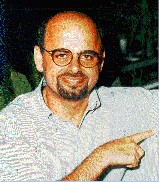
Lefteri Tsoukalas |
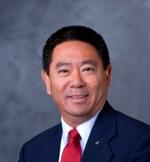
Bernard Tao |
This conflict resulted in the forced resignation of Tsoukalas, but not until after he had set in motion a federally mandated investigation that led to the erroneous conclusion that Taleyarkhan had perpetrated scientific research misconduct. As a consequence of the investigation, and the imposed sanctions, the toll on Taleyarkhan was heavy.
About a year ago, a relative of Taleyarkhan's met Tao in his office on an unrelated matter. According to the relative, just before the relative left his office, Tao said he was "really sorry about what happened to [Taleyarkhan].”
Tao said, “He's a good man." |
Tao was referring to the investigation led by University Research Integrity Officer Peter E. Dunn that resulted in the two allegedly substantiated allegations of research misconduct against Taleyarkhan and the subsequent sanctions he faced by Purdue.
The relative told New Energy Times that Tao appeared to feel remorse about being unable to help Taleyarkhan during the academic conflicts and investigations that he had to endure.
"I didn't have a choice," Tao told the relative. "Jischke told me to stay the hell out of it."
Martin C. Jischke, now retired, was the president of Purdue University when Tao was the chairman of the Purdue Faculty Senate. |
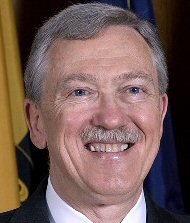
Martin C. Jischke |
New Energy Times spoke with and reviewed with Tao the quotes from the relative on Thursday.
"I cannot confirm or deny that I said that," Tao said. "Unfortunately, I cannot get involved. I've been reading what you've been doing on New Energy Times, and I appreciate what you've been doing."
Several months ago, on July 8, Taleyarkhan sent an e-mail to Tao, thanking him for the kind words and information that Tao had conveyed to Taleyarkhan's relative.
On July 13, Tao replied to Taleyarkhan.
"You are most welcome, Rusi! Regardless of any of this stuff, you are a valued Purdue colleague," Tao wrote.
|

